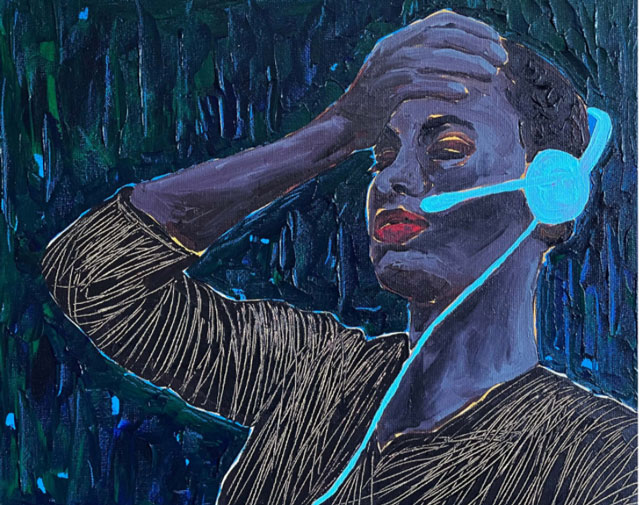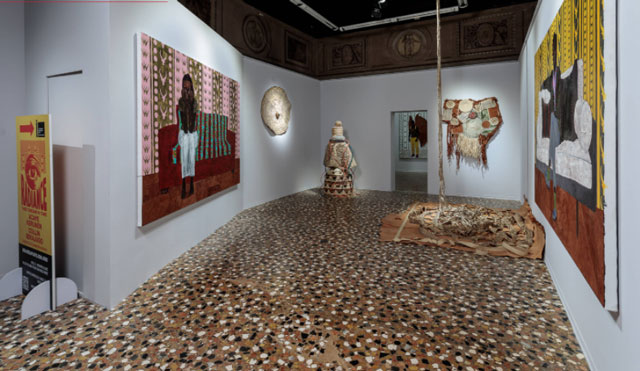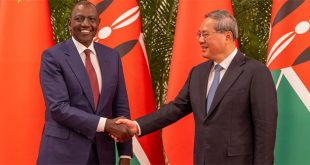
Two Ugandan artists, Collin Sekajugo and Pamela Acaye Kerunen step on the biggest art stage in the World that runs from 23 April to 27 November 2022
ART | DOMINIC MUWANGUZI | It is almost time to sing all praises to Ugandan art. The inaugural presence of Ugandan artists, Collin Sekajugo and Pamela Acaye Kerunen at the world’s biggest art platform, has thrust Ugandan art into the international art limelight. For Sekajugo, little raves may be made about his presence here since the artist already enjoys global recognition and has a permanent showcase of his art at one of the world’s prestigious art museum, the Smithsonian Museum. But Acaye’s debut on the global art stage, especially at the Venice Biennale, is a reflection of the often talked about maturity and advancement in Contemporary art from the region.
Acaye represents the emerging artists in Uganda and elsewhere in the region that are energetic and vibrant. These are fervently determined to break the boundaries of Ugandan art and the labeling that follows it as “not good enough for the international stage.” Their assertiveness through subjecting their work to experimental processes like Acaye’s work that straddles the identity of craft and art, catapult it into the international limelight.
Acaye’s work has generally been described as artisanal and with a social conscious by those who engage with it. The artist works with a group of women to create functional and sometimes conceptual artworks crafted from indigenous material to create a connection between herself and her immediate surroundings or cultural heritage. In her Alur culture, objects like mats, beads and baskets are central in the day to day life of the homestead. They do not only perform social functions in a home but also imbue a figurative meaning to the spiritual wellbeing of the individual and their family. These objects will also hint on the subject of environment conservation that many communities across Africa traditionally appreciated and treasured. Such multifaceted identity of her work resonates with Sekajugo’s multidisciplinary art that often interrogates the subject of individual identity in a fast globalized world. Sekajugo’s previous body of work in the exhibition What is Beautiful 2018 and This is Uganda 2020, opened conversations on this subject of complex identity.

The fusion in meaning of both artists’ work and artistic processes; both artists work with either indigenous or found objects; are reason why the theme Radiance- They Dream in Time for the Ugandan Pavilion was conceived. The theme evokes the idea of paying homage to a dynamic Uganda visual culture while focusing on the global identity of art. In the statement by the curator of Ugandan exhibition, he says, “both artists have been actively working with formal and informal archives of Uganda’s dynamic visual culture.” This mutual artistic relationship already mentioned before, is partly the strength of the Ugandan Pavilion at the Biennale. The audience will be afforded an opportunity to encounter “a dynamic visual culture of Ugandan art” with the artists’ showcase of art that conveys and examines the use of indigenous elements and materials in art making. More so, the engagement will stimulate conversations on the role played by social conscious art on the global art stage.
The debut of Ugandan artists at Venice will continue to cause excitement locally and internationally. For the next seven months as the Biennale ushers in visitors across the globe, the Ugandan Pavilion is going to be a subject of great interest for artists, art critics, art collectors and gallerists. Sekajugo, has already disclosed that their debut here is a big opportunity not only for themselves, but to artists back home. Indeed, global art news networks and art magazines have followed suit to endorse the Ugandan Pavilion as one of those spaces the guests should look out for. But in the midst of this rapture, artists need to reflect on the future ahead. Now that Ugandan art is on the international stage, where it has always wanted to be, let the artists and the different stakeholders of the industry, work towards a sustainable presence at global art festivals. A pavilion at the Venice may not necessarily be enough, but establishment of working art infrastructures back home will definitely be the right step in the right direction. This will ensure regular presence of Ugandan artists at such international art platforms.
*****
The Ugandan Pavilion is curated by Tanzania born Curator, Shaheen Merali and supported by Uganda National Cultural Centre.
 The Independent Uganda: You get the Truth we Pay the Price
The Independent Uganda: You get the Truth we Pay the Price



